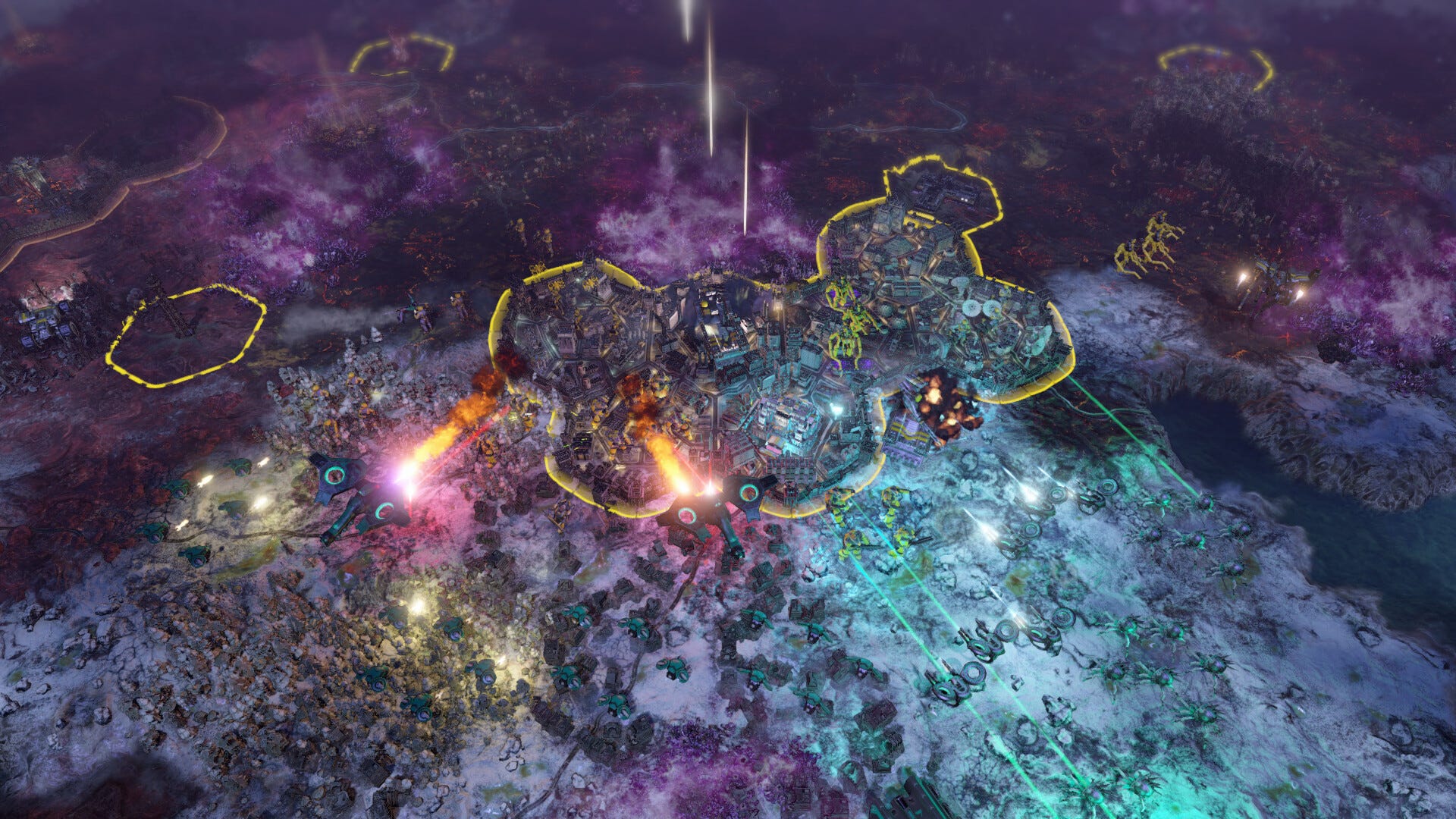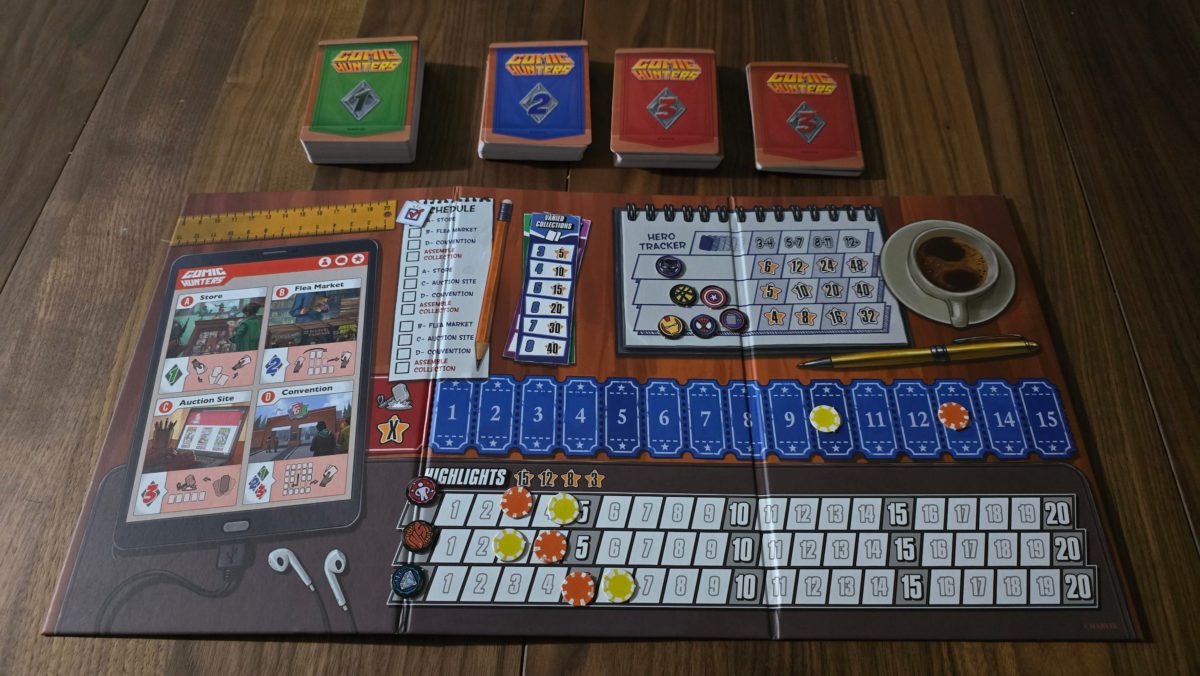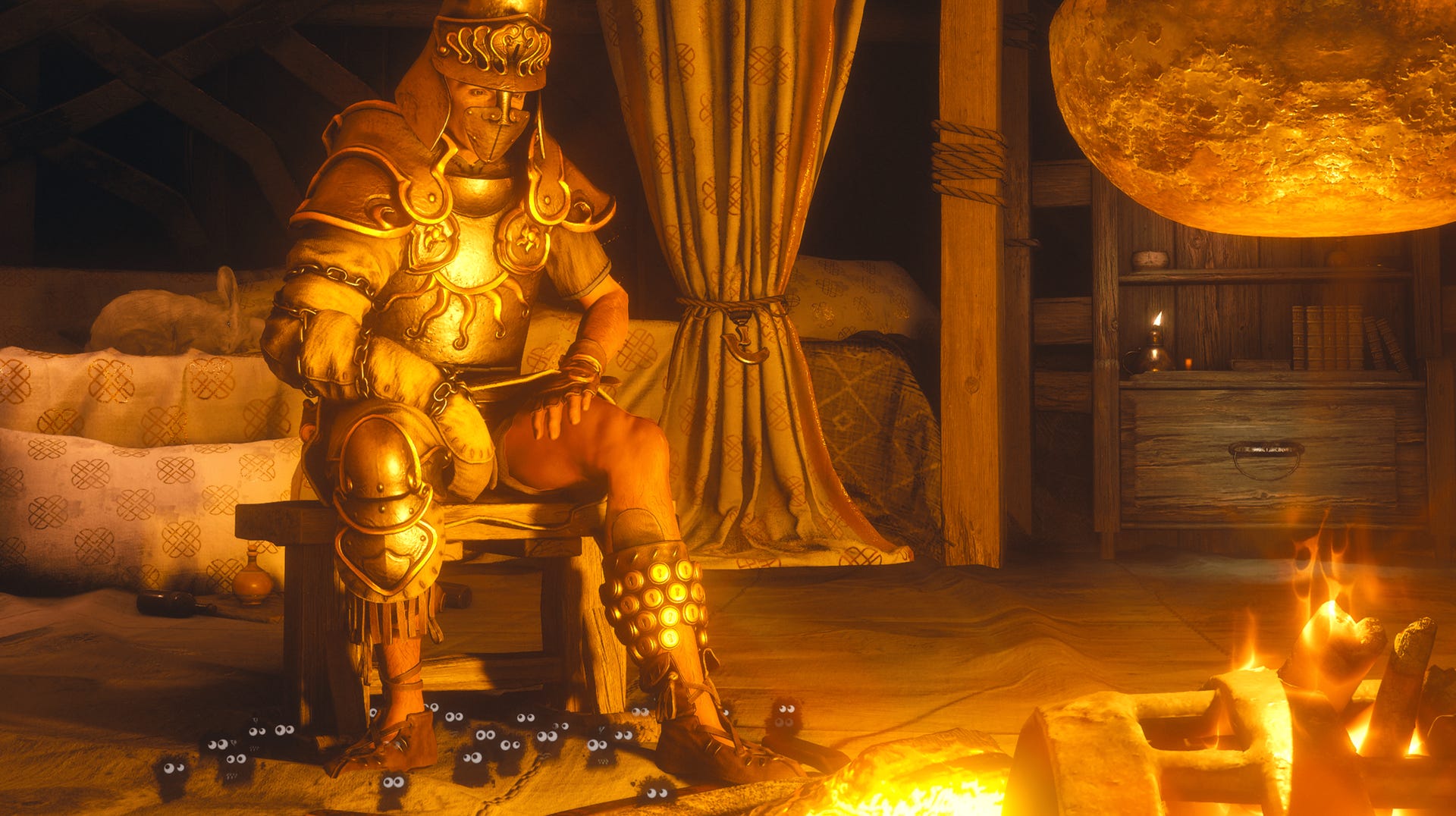There’s a line in our Dragon Age: The Veilguard review that has stuck with me throughout my own playthrough: “It’s hilarious that no one ever says the word ‘Veilguard’ out loud across the 100 hours I played of this dialogue-packed campaign, exposing a last-minute marketing pivot for what it was.”
While I’m nowhere near the 100-hour mark myself, that line is so far proving true – not a single character has mentioned The Veilguard. My team of D&D archetype oddballs may collectively be known as such in all the marketing, online articles, and the physical box itself, but within the world of Thedas they’re none the wiser. Imagine Tony Stark and Steve Rogers having no idea the world called them Avengers… that’s how odd it is.
A name that Rook, Varric, Harding, and the rest of the gang definitely do know, though, is Dread Wolf – the mythical moniker of former Dragon Age companion, Solas, as well as the original subtitle for this fourth entry in BioWare’s fantasy series. While ultimately it really doesn’t matter what this game is called, the more I play The Veilguard, the more it feels like it’s awkwardly in conflict with itself, torn into pieces that reflect two very different intentions – one a sequel to a decade-old RPG, the other a fresh beginning with no ties to what came before.
Many aspects of The Veilguard point to it being something of a soft reset or even spin-off from the main Dragon Age series. Set in the northern Tevinter region, it leaves behind the saga’s original southern home of Ferelden, along with all its characters and politics. Dragon Age has always started afresh with each new game as, unlike Mass Effect, there’s no persistent protagonist across the series as each instalment tells a brand new story. The shift to Tevinter is perfectly in keeping with Dragon Age’s history, then, but The Veilguard isn’t a typical Dragon Age game. It is its first direct sequel – a continuation of Dragon Age: Inquisition, which dedicated its post-credits and Trespasser DLC to setting up Solas as the villainous Dread Wolf. And this is where it all starts to feel a little messy.
So much of The Veilguard is dedicated to Solas. Its opening sees him performing a dangerous god-unleashing ritual, and the world is littered with quests that explore his history and relationship with those dark deities. There may be no mention of the word “Veilguard” anywhere, but everyone is talking about the Dread Wolf. Why isn’t that the name of the game again?
Rather than take his place as the villain Trespasser promised, Solas is usurped by a much more newcomer-friendly optionBut while Solas may take up considerable space, the Dread Wolf has weirdly been relegated to the position of fantasy Hannibal Lecter, trapped in dreams where he appears only to offer advice. Rather than take his place as the villain Trespasser promised, he’s usurped by other dark elven gods who don’t demand any significant prior knowledge – a much more newcomer-friendly option. I’m left with the impression of an antagonist who was robbed of his big bad status somewhere along The Veilguard’s infamously rocky development journey. As our review says, you can “practically smell the rewrites.” But despite his shift from villain to condescending informant, the story is still dedicated to him in a manner that never feels like a true fit for a game that elsewhere is so clearly attempting to be a fresh start rather than a direct sequel.
While I’d rather we got a more clear-cut successor to Inquisition, I think the game we’ve ended up with would be better for cutting Solas loose entirely. Sure, the lack of answers to one of the greatest twists in RPG history would be frustrating, but Solas’ fate feels divorced from the story that established him. That’s because none of the world-altering choices you made across the Dragon Age series are reflected in The Veilguard. Unlike its predecessors, there’s no way to import or recreate your save games and world state aside from three basic and largely interchangeable decisions made in Inquisition’s Trespasser DLC.
Speaking to IGN earlier this year, creative director John Epler told us “among many reasons why we moved to Northern Thedas is it becomes a little bit more of a clean slate for us. There’s not as many decisions you have made up to this point that have an impact on what’s happening in Northern Thedas. And we don’t have to speak directly to things like who is the Divine? Because again, that’s happening in the South.”
But the South is where we made our home and our ties to this world, and so this move means that the Thedas that we helped influence and shape across dozens of hours is not the same Thedas that’s currently at stake. With The Veilguard’s elven gods representing not just the greatest apocalyptic threat Thedas has ever faced, but also the culmination of the Inquisition storyline, then surely it’s more important than ever that the stakes are our own, personal version of this world?
I do sympathise with BioWare – Dragon Age wasn’t developed as a trilogy in the same way as Mass Effect, and so the choices have been on very different scales that must be incredibly difficult to implement into successive games. But those choices being wiped entirely results in something that feels like an opening trying to be a finale. It’s a situation only further strained by the fact that The Veilguard’s version of Thedas is so tonally different from the one established in the previous Dragon Age games. Its grand Necropolis and floating Minrathous fortress feel divorced from the earthier lands of Inquisition and a far cry from the darker regions in which this saga began. Veilguard is a whole new world untouched by players and that clashes with its insistence on continuing Solas’ story in a roundabout way. If BioWare really needed to leave our choices behind, or if it really needed to start afresh for a new era, then going the Mass Effect: Andromeda route of an entirely new story, characters, and setting would have been the cleaner choice.
The Veilguard crew all appear to be likeable people, but it feels as if I’m being blocked from forging true bonds with them.And so we come back to that history-avoiding title. When Dragon Age: Dreadwolf became Dragon Age: The Veilguard, BioWare’s general manager Gary McKay explained the new name was chosen to reflect the “really deep and compelling group of companions.” It’s an unsurprising shift, moving away from Solas’ decade-old story that perhaps too few players will actually care about in favour of a direction clearly inspired by the phenomenon that is Baldur’s Gate 3’s beloved party. But, frustratingly, I don’t think The Veilguard does the intention of its new title justice.
Across the first 15 or so hours, during which you put together a god-killing team Mass Effect 2-style, there’s rarely the option to have a proper back-and-forth conversation. There’s a tendency to favour cutscenes or pre-scripted chat over traditional RPG dialogue choices, resulting in the feeling that characters are talking at you rather than with you. Very few party members can be spoken to at length following their initial recruitment, and this lack of introductory getting-to-know-you feels antithetical to a design that expects you to quickly forge bonds and trust with your team. As time goes by there are more opportunities to direct the flow of conversation yourself, but they frequently lack the multi-tier dialogue trees that really allow you to delve deep. It was only after unlocking the dragon-hunting Taash that I was presented with a conversation in which I was able to cycle through multiple tiers of responses at every stage of the dialogue. It was the first satisfying conversation I’d had in 17 hours of play, and I’m baffled as to why I hadn’t had the same experience with every other character I’d met.
The Veilguard crew all appear to be likeable people, but it feels as if I’m being blocked from forging true bonds with them. That especially goes for Varric. What is arguably Dragon Age’s best-ever character has been imprisoned in his bedroom, consigned to spouting incidental dialogue that you can’t engage with. His sidelining is yet another example of The Veilguard’s uneasy relationship with its predecessor, but unfortunately the frustrating treatment of its new cast means it’s also difficult to fully embrace the story’s fresh faces.
As I enter The Veilguard’s second half I have begun to appreciate its unique approaches. The knotty, secrets-filled Crossroads region is fun to explore. The action combat is really robust, particularly when enhanced by the well-considered skill tree. But at every turn you can feel the toll of that long, rocky development timeline. There’s a solid God of War-style action game in here, but its sharp battles, linear-ish level design, and explosive cutscenes clash with the more traditional RPG that’s also fighting for air. Those level layouts throttle the quest design, action always takes precedence over conversation, stealth, or diplomacy, and the companions are more like NPCs than party members – Atreus over Astarion.
The overall result is that Dragon Age: The Veilguard isn’t the golden era BioWare game that I had hoped it would be. Torn between continuing its traditional role-playing legacy and starting afresh as a modern action RPG, the end result is an awkward sequel trapped in a cage made of reboot ideas. After years and years of faltered steps I understand why BioWare landed on this particular, very mainstream AAA formula, but I wish it had been inspired by the undying mass popularity of The Witcher 3 – a full-on nerdy RPG – rather than veer closer to Sony’s palatable RPG-ish approach for modern God of War. But that ill-defined shape is often what uneasy development cycles get you. Thankfully The Veilguard’s launch has seemingly gone well for EA and BioWare, which hopefully means Dragon Age will continue. Let’s just hope next time it’s not just the name that’s got a bit of Baldur’s Gate in it.
Matt Purslow is IGN’s Senior Features Editor.






